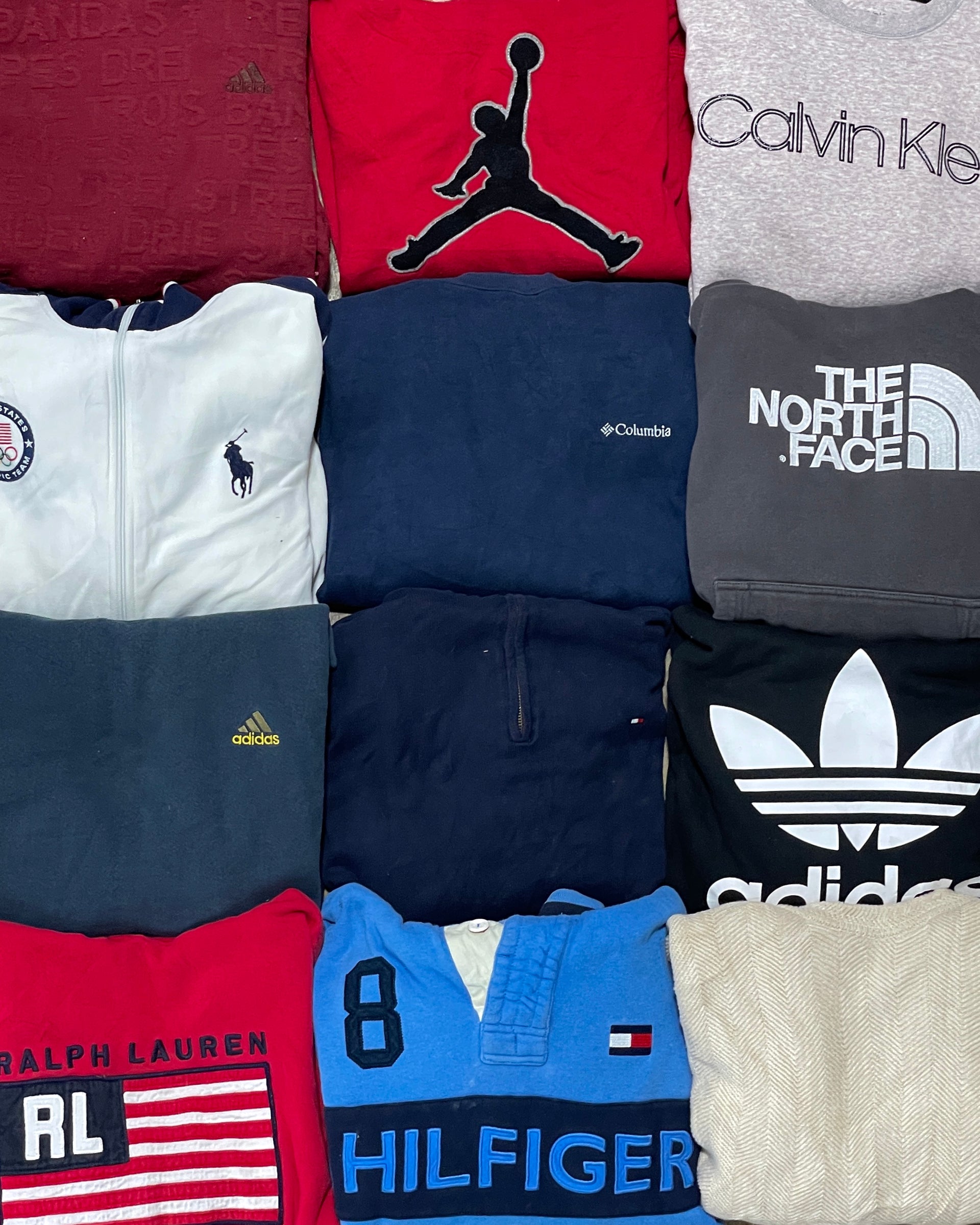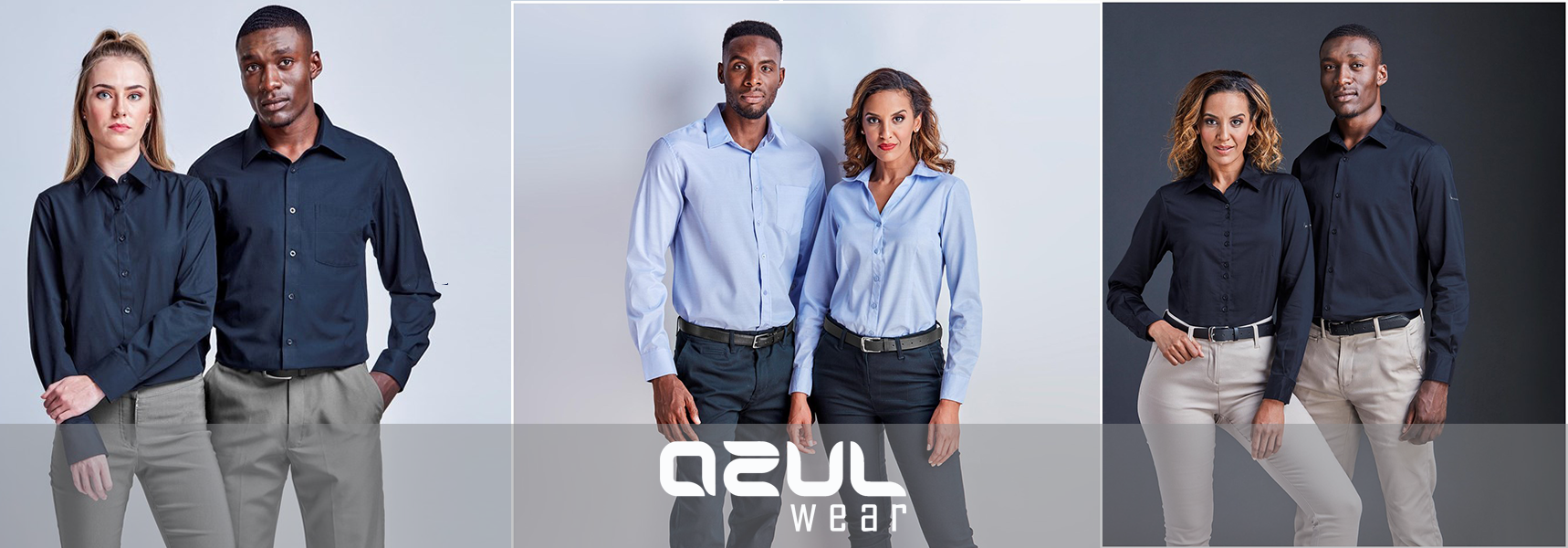Choosing Branded Clothing That Supports a Greener Wardrobe
Choosing Branded Clothing That Supports a Greener Wardrobe
Blog Article
The Value of Lasting Clothes: How It Influences the Setting and Your Closet
Sustainable clothing is significantly acknowledged for its vital function in reducing the environmental influence of the fast apparel industry. By concentrating on environmentally friendly materials and moral production methods, it addresses pushing environmental problems. This shift not just benefits the planet however additionally influences customer selections, leading to a much more thoughtful method to wardrobe management. Comprehending these dynamics raises necessary questions about style's future and personal obligation in forming it.
The Environmental Footprint of Fast Fashion

Advantages of Lasting Materials
Sustainable products provide substantial advantages, specifically with environmentally friendly material choices that minimize environmental damage. These products also show durability and longevity, lowering the demand for constant replacements. Because of this, they contribute to a much more sustainable apparel industry and promote accountable consumer behavior.
Eco-Friendly Material Options
While the garment industry has actually long been connected with quick fads and environmental damage, the surge of eco-friendly fabric choices provides a transformative possibility. Lasting products such as organic cotton, hemp, and Tencel have acquired appeal as a result of their lower environmental effect. These materials are often created without unsafe pesticides and need much less water, decreasing their carbon footprint - Branded Clothing. Additionally, lots of environmentally friendly fabrics are biodegradable, adding to a round economy by lessening waste. Choosing lasting products not only sustains ecologically accountable practices yet additionally advertises healthier communities. As consumers come to be more mindful of their purchasing power, the demand for green textiles motivates brands to introduce and embrace even more lasting manufacturing techniques, eventually profiting the world and future generations
Longevity and Durability Advantages
Several consumers are significantly acknowledging the sturdiness and long life benefits of sustainable materials in their apparel options. Unlike traditional materials, sustainable materials such as natural cotton, hemp, and recycled polyester are crafted to withstand wear and tear, leading to garments that last much longer. This minimized regularity of replacement not only saves customers money gradually but also diminishes waste produced by rapid style. On top of that, sustainable apparel commonly employs green manufacturing approaches that improve fabric strength, adding to a reduction in the total carbon footprint. By investing in long lasting clothing, consumers can grow a much more sustainable closet while delighting in high-grade items that keep their aesthetic and capability in time. Durability and longevity stand as key benefits of selecting sustainable products.
Lowering Waste Via Sustainable Practices
Reducing waste in the garment industry can be achieved via innovative methods such as upcycling and repurposing products. Furthermore, embracing minimal wardrobe methods encourages customers to focus on top quality over amount, inevitably reducing clothing intake. Together, these approaches add substantially to a much more sustainable apparel version.
Upcycling and Repurposing Materials
Upcycling and repurposing materials have actually arised as cutting-edge approaches in the garment industry, changing thrown out fabrics into valuable new products. This technique not just minimizes waste however also motivates imagination and originality in clothes layout. By taking old garments and materials, designers can produce one-of-a-kind items that show personal design while lowering the need for brand-new sources. Furthermore, upcycling commonly calls for much less energy and water compared to typical manufacturing procedures, greatly reducing the environmental impact of style. As consumers come to be extra aware of sustainability, the popularity of upcycled garments remains to increase, promoting a round economy. Eventually, these techniques add to an extra lasting future, where fashion prioritizes ecological health and wellness over fast manufacturing and usage.

Minimal Closet Strategies
As individuals significantly seek to lessen their environmental impact, adopting minimalist closet techniques has obtained grip as a reliable approach to lasting style. These techniques emphasize quality over quantity, motivating customers to curate a smaller collection of functional, resilient clothes. By focusing on timeless items that can be combined and matched, people can reduce the frequency of purchases and eventually lower waste.Additionally, minimalism advertises mindful intake, advising customers to mirror on the honest and ecological implications of their selections. This approach not just promotes a more sustainable way of living however likewise streamlines daily decision-making relating to attire. As individuals welcome minimal concepts, they add to a style society that values sustainability and accountable consumerism, ultimately causing a much more eco-conscious society.
The Duty of Ethical Labor in Lasting Style
While several consumers are increasingly knowledgeable about the environmental effects of their garments choices, the value of moral labor practices in lasting fashion can not be neglected. Honest labor includes fair wages, secure working conditions, and respect for employees' rights, developing the foundation of responsible style manufacturing. Brands that prioritize moral labor not only boost communities yet additionally set a standard for liability in the industry.Moreover, the integration of ethical methods cultivates openness, enabling customers to make enlightened choices about their acquisitions. This technique contrasts greatly with quick style's unscrupulous labor designs, which often focus on revenue over individuals. By sustaining business dedicated to ethical labor, consumers add to a system that values human self-respect together with environmental sustainability. Consequently, ethical labor is not merely an add-on; it is vital to the more comprehensive mission of lasting style, ensuring that the mission for eco-friendliness does not come at the expense of human civil liberties.
The Influence of Sustainable Garments on Carbon Emissions
Lasting garments has the potential to considerably decrease carbon exhausts connected with the apparel industry. Typical garment manufacturing adds especially to greenhouse gas discharges, largely because of energy-intensive manufacturing processes and making use of non-renewable sources. On the other hand, lasting style concentrates on eco-friendly products, such as natural cotton or recycled fibers, which typically call for much less power to produce.Moreover, lasting brand names often tend to adopt much more efficient production methods, lessening waste and lowering overall exhausts. By prioritizing durability and hop over to here ageless style, lasting clothing motivates consumers to purchase less regularly, further reducing the carbon footprint linked with overconsumption.Additionally, numerous sustainable brand names are committed to transparency in their supply chains, enabling consumers to make educated options that align with their worths. Ultimately, changing towards lasting clothing can lead to a substantial decrease in carbon exhausts, adding to a healthier world and a more sustainable future for the apparel industry.
Supporting Neighborhood Economies With Sustainable Options
The shift toward lasting garments not only addresses ecological issues yet also substantially benefits neighborhood economies. By picking sustainable style, customers commonly support neighborhood craftsmens and local business, enhancing check these guys out area resilience. These business normally operate a smaller scale, prioritizing craftsmanship and ethical practices over mass production.Investing in locally made lasting clothing promotes task production and stimulates financial development within communities. As customers become more familiar with the ecological impact of their acquisitions, they significantly choose items that reflect their worths. This demand motivates local suppliers to take on sustainable methods, adding to a round economy.Moreover, supporting regional businesses reduces transportation discharges, lining up with eco-conscious consumer habits. The interconnectedness of lasting clothes and local economies underscores the crucial function that private options play in advertising both environmental and economic health. By promoting these neighborhood connections, neighborhoods can grow while likewise working in the direction his comment is here of an extra lasting future.
Transforming Your Storage Room: Tips for a Lasting Closet
As people look for to decrease their environmental influence, changing a wardrobe into a sustainable wardrobe ends up being a vital action. One reliable technique is to examine existing clothes, maintaining just things that are put on on a regular basis which align with sustainability objectives. Focusing on quality over amount is crucial; purchasing long lasting pieces from environmentally friendly brand names can substantially decrease waste.Additionally, incorporating used things can revive a wardrobe while minimizing ecological damages. Organizing garments swaps with close friends or donating extra things can additionally promote sustainability.When shopping, people ought to seek products that are natural, recycled, or eco-friendly, and stay clear of fast style stores - Branded Clothing. Ultimately, exercising conscious intake by attentively considering each purchase can contribute to a much more sustainable way of life. By carrying out these suggestions, one can produce a closet that mirrors personal style while sustaining ecological stewardship
Often Asked Questions
Just How Can I Recognize Sustainable Apparel Brands?
To determine sustainable clothing brand names, one ought to research products made use of, look for qualifications like Fair Trade, and check out the brand name's transparency about their manufacturing procedures, labor methods, and environmental impact, guaranteeing environment-friendly and ethical practices are prioritized.
What Are the Costs Associated With Sustainable Style?
The costs associated with sustainable style can differ significantly. Higher manufacturing expenses, honest sourcing, and green materials often result in enhanced list prices, which might deter some consumers while interesting ecologically conscious shoppers.
Can Lasting Garments Be Trendy and Trendy?
Lasting clothes can without a doubt be stylish and fashionable. Designers significantly prioritize ingenious materials and moral manufacturing techniques, proving that style and sustainability can exist together. Consumers now have varied options that blend aesthetics with ecological awareness.
How Does Laundering Garments Affect Their Sustainability?
Washing garments considerably effects sustainability by consuming water and energy, adding to contamination, and creating microplastic release. Constant cleaning can degrade textiles, reducing their life-span and increasing the demand for replacements, inevitably intensifying environmental issues.
What Is the Life-span of Lasting Clothing Compared to Rapid Style?
The lifespan of lasting garments generally exceeds that of rapid fashion items, frequently lasting numerous years because of high quality materials and craftsmanship. In comparison, rapid style garments may deteriorate swiftly, demanding more frequent replacements. Sustainable garments is increasingly acknowledged for its essential duty in minimizing the environmental effect of the quick style industry. While several customers are significantly conscious of the environmental effects of their garments choices, the value of moral labor methods in sustainable style can not be forgotten. Branded Clothing. Sustainable garments has the possible to considerably decrease carbon discharges associated with the style industry. In comparison, sustainable style concentrates on green materials, such as organic cotton or recycled fibers, which typically require less power to produce.Moreover, sustainable brands tend to take on extra efficient manufacturing practices, minimizing waste and decreasing total emissions. By prioritizing toughness and ageless design, sustainable clothing encourages customers to buy less regularly, additional decreasing the carbon impact connected with overconsumption.Additionally, several sustainable brands are devoted to openness in their supply chains, making it possible for customers to make educated choices that straighten with their values
Report this page